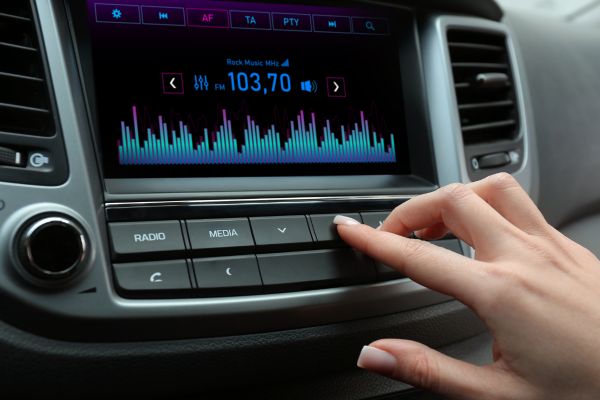If you’ve ever sat in your car, turned up the volume, and thought, “Hmm, this just doesn’t hit right,” you’re not alone. Factory-installed stereos are fine for casual listening, but let’s be real—they usually lack depth, clarity, and that wow factor. That’s where car audio system upgrades come in. Whether you’re chasing chest-thumping bass, crisp vocals, or just a richer overall sound, the right upgrades can completely transform your driving experience.
Why Consider Car Audio System Upgrades?
The thing is, most stock car stereos are designed with cost efficiency in mind, not performance. Automakers know you want Bluetooth, navigation, maybe some touch-screen action—but sound quality? That’s often an afterthought. If music is your escape, your motivation, or simply what gets you through traffic, investing in better audio just makes sense.
Upgrading your system isn’t only about loudness. It’s about balance, detail, and that immersive feeling where you notice instruments or lyrics you never picked up before. A properly tuned system can make your daily commute feel like a live concert.
The Heart of the Upgrade: Head Units
A good head unit (or stereo receiver) is the brain of your entire setup. Factory radios can limit audio output, especially when it comes to power and equalization options. Swapping it out for an aftermarket unit unlocks more control over your sound. You get features like time alignment, advanced EQ settings, and better preamp outputs. Plus, modern receivers often include extras like Apple CarPlay, Android Auto, and high-res audio compatibility. It’s the foundation for any serious car audio system upgrades.
Speakers: Where Clarity Comes Alive
Let’s talk speakers. Even if you do nothing else, replacing your factory speakers will instantly level up your sound. Stock speakers are often made from cheap paper cones that wear down over time. Aftermarket speakers, on the other hand, use better materials like polypropylene or Kevlar for durability and clearer tones.
Component speakers separate the tweeters (for highs) from the woofers (for mids), giving you a more natural soundstage. Imagine vocals floating from the dashboard while the instruments surround you—it’s that kind of difference. Full-range speakers are a simpler option and easier to install, but if you want true clarity, components are worth the effort.
Adding Bass with Subwoofers
Let’s be honest, no discussion of car audio system upgrades is complete without subwoofers. Subs handle the low frequencies your regular speakers can’t manage, giving depth and punch to your music. Without one, tracks often sound flat or incomplete.
The cool thing is you don’t need a monster-sized box that takes up your entire trunk. Today’s market has slim subs that fit under seats, powered subwoofers that don’t require a separate amp, and traditional enclosed options for bass enthusiasts. The right sub adds warmth and fullness to everything—from hip-hop to classical.
Amplifiers: Power Behind the Sound
Your factory stereo just doesn’t have the juice to fully drive aftermarket speakers or subs. That’s where amplifiers come in. An amp ensures each speaker gets clean, powerful signals without distortion, even at high volumes. It’s like upgrading from a flashlight to stadium lights—the detail becomes clear, and the dynamics finally breathe.
Depending on your system, you might go for a 4-channel amp to power speakers or a mono amp specifically for your subwoofer. Some setups use both. And don’t worry—it doesn’t have to get overly complicated. Once installed, the improvement in clarity and volume is hard to ignore.
Sound Deadening: The Overlooked Upgrade
Here’s a secret most people overlook: your car itself affects your sound. Road noise, vibrations, and rattling panels can ruin your listening experience. Adding sound-deadening materials to doors, floors, and trunk areas creates a quieter cabin and lets your audio system shine. It’s like putting your speakers in a proper studio instead of an echoey garage. Small change, huge difference.
Balancing Budget and Performance
Now, you don’t have to drop thousands to enjoy quality sound. Start with what bothers you most. Are your highs too sharp? Swap speakers. Want more punch? Add a sub. Feel like everything’s underpowered? Add an amp. Car audio is modular, which means you can build your dream system piece by piece.
The key is planning. Think about your goals. Do you want volume that shakes the mirrors, or a balanced system where every note feels crystal clear? Your answer helps determine where to spend first.
Installation: DIY or Professional?
Some upgrades are DIY-friendly, like replacing door speakers or adding a powered sub. But wiring amplifiers, tuning crossovers, and ensuring everything’s properly grounded? That can get tricky fast. If you’re not confident, a professional installer is worth the investment. A poorly installed system can lead to blown speakers, electrical issues, or just bad sound. And nobody wants that after spending money on upgrades.
Living With an Upgraded System
Once you’ve upgraded, it changes how you experience driving. Road trips become more enjoyable. Sitting in traffic feels less painful. Even podcasts and audiobooks sound richer and easier to follow. And let’s face it—cranking your favorite track with a properly tuned system? That’s pure joy.
Final Thoughts
At the end of the day, car audio system upgrades aren’t just about volume or showing off. They’re about rediscovering music in a space where many of us spend hours every week. Whether you start small with speakers or go all-in with amps, subs, and sound-deadening, every step brings you closer to that immersive, goosebump-inducing sound.
So next time you slide into the driver’s seat, don’t settle for flat, uninspired audio. Build the system you’ve always wanted. Because when your car sounds this good, every drive feels like a concert on wheels.

